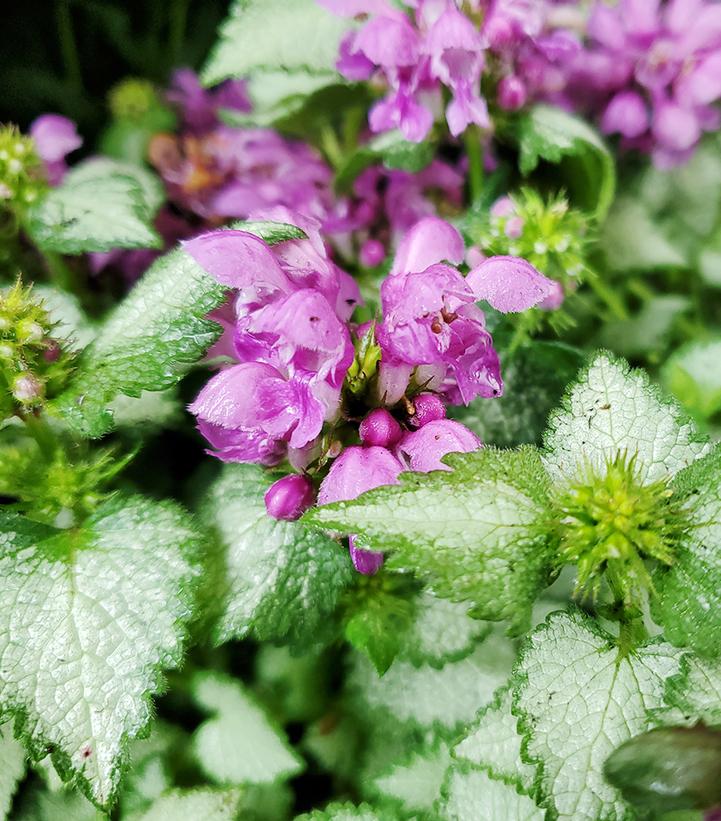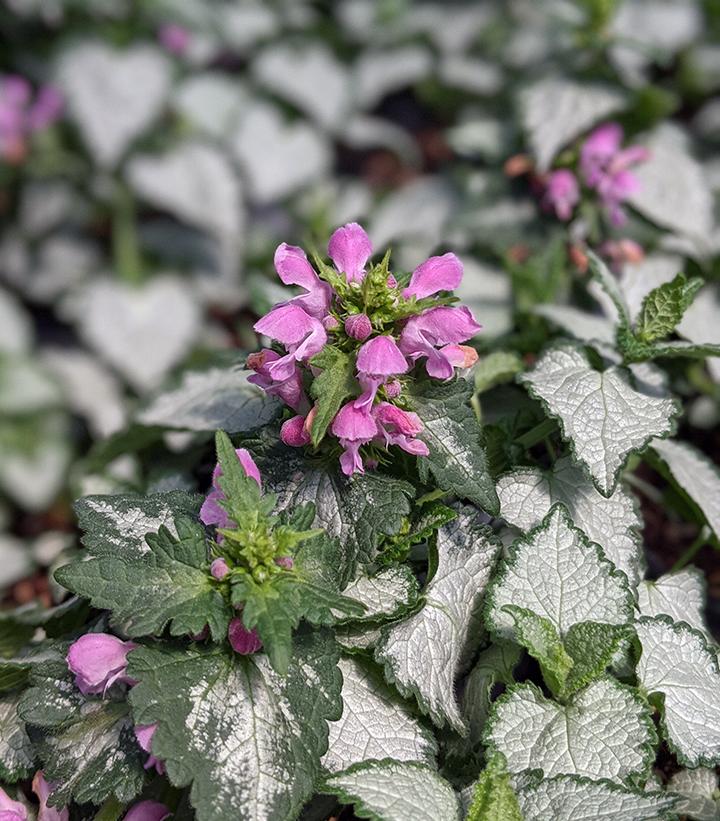I like to write really detailed blogs about bugs and plants. I think they are fabulous. Tracy and Alec, who help me edit and schedule these blogs often find them less fabulous than me. Beyond editing out my abundant comas and correcting typos, they are also the sounding board for my ideas. I wrote a really informative blog on moles and voles and had it scheduled to email out to you this week. Tracy and Alec argued that although fabulous (my word not theirs) and informative (they did agree that it was), it was really just too bleak for mid March. I countered with just how important it was you all were aware of the potential damage those little buggers were doing to your gardens under all that snow and they argued back that because you’ve all been shoveling all that snow you probably were in need of something more uplifting than a blog on garden rodents. My feelings are not hurt, I simply moved that blog over to mid May!
So instead of moles and voles, lets focus on really pretty and reliable early spring shrubs and perennials instead! I always feel so happy when my daffodils and crocus poke their heads up out of the ground, or in most years snow, but beyond those few spring bulbs there is a wide pallet of perennials and shrubs that can and will lift your spirits come spring! I’ve put together a list of some of my favorite early spring plants to keep you inspired through what we all hope are these last few weeks of winter.
Hellebore (Lenten Rose)
Hellebores were my grandmothers harbingers of spring and because they were her favorite, they are where I will start this list. This beauty will greet you in March and keep flowering into May. They are tough and easy to grow with showy foliage that seems to shine in the early spring sun. They are the perfect plant for naturalizing in moist, woodland areas and they are also surprisingly shade tolerant. Oh, and lets not forget they are deer resistant too!
The new Sunkiss series has 8 different colors that flower from March to May. Like most new introductions, these will have limited availability for the first few seasons so if you want one, let us know as soon as possible. A fun fact about hellebores is that most of the hybrid varieties take up to 5 years to bloom form original propagation. That little fact is what makes them more expensive than many other perennials that bloom the year after we seed or divide them.
Pictures of the Sunkiss varieties added
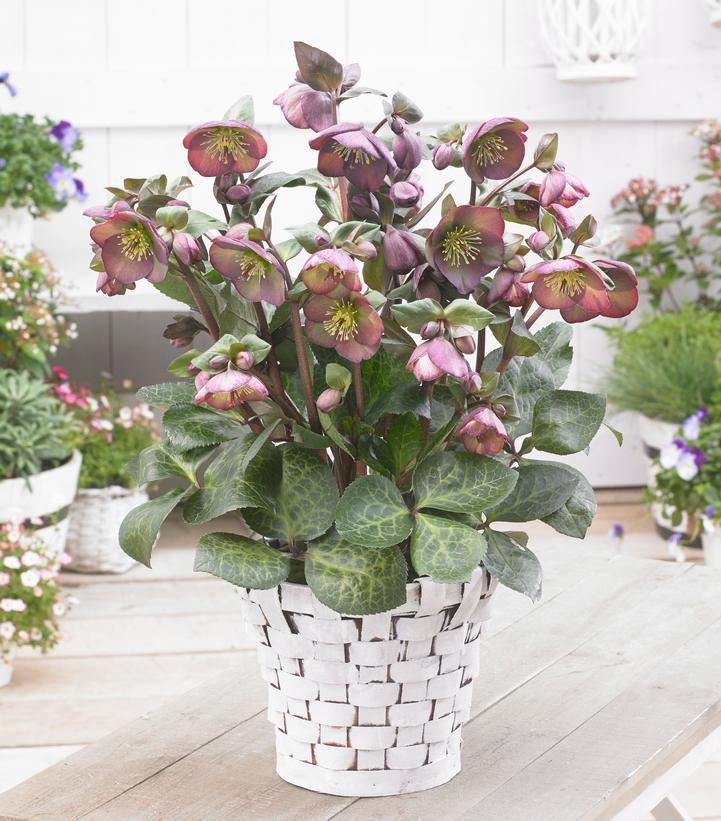
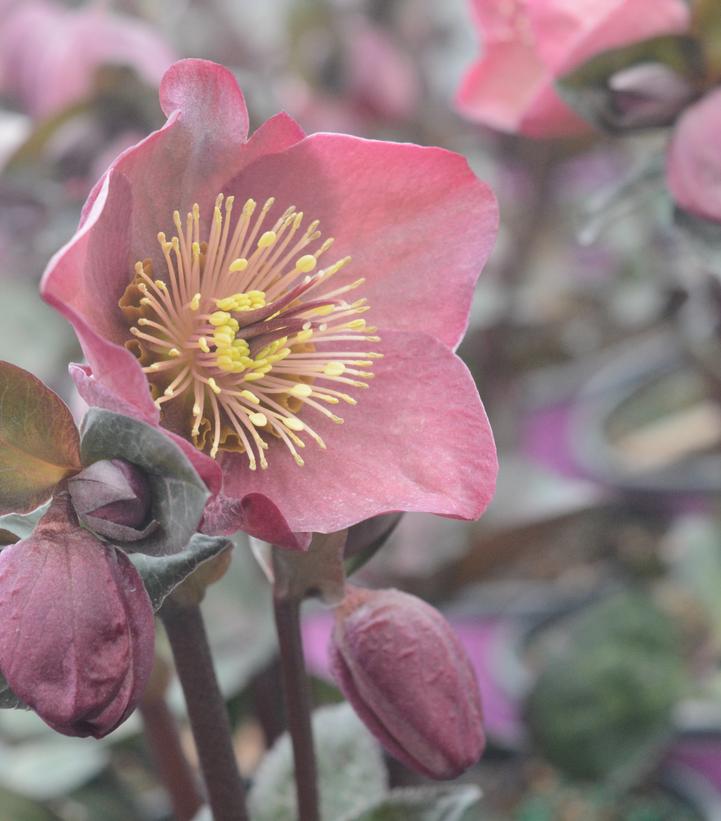
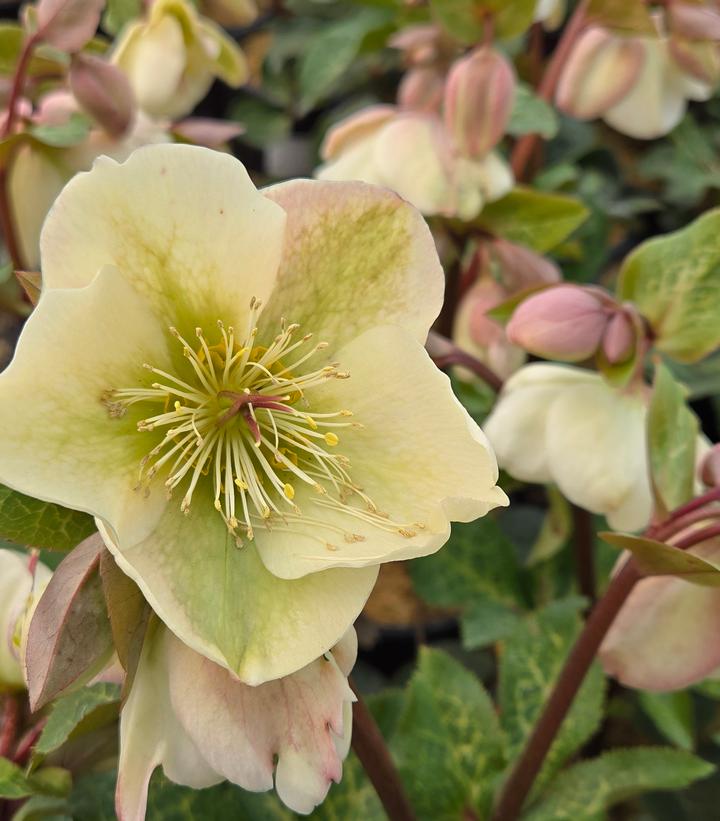 HELLEBORUS FROSTKISS `DANA`S DULCET`
HELLEBORUS FROSTKISS `DANA`S DULCET`
HELLEBORUS FROSTKISS `PENNY’S PINK`
HELLEBORUS X FROSTKISS `MOONDANCE`
Armeria (Thrift, Sea Pink)
I have always liked this early spring bloomer because of the dark green grass-like foliage that grows in mounds. The foliage is a perfect backdrop to the globe shaped pink flowers that rise above it starting in April and continuing through May. This perennial is a strong, long bloomer for early spring and it’s perfect for massing at the front of a garden.
Armeria thrives in full sun and is also drought resistant. I prune it down to the ground in late fall after we’ve had a hard frost.


Armeria maritima Splendens
Armeria maritima Medley
Brunnera
Looking for a bright pop of both flower and foliage color for a shady garden? Brunnera is for you! This plant has showy, sky blue flowers and bright silver or green foliage. Our favorite varieties are the silver leafed ones because the foliage is big, heart shaped and features unique silver toned colors. Brunner thrive in shaded areas and can grow into a good sized mound. Many garden writers often list it as a great groundcover but in my experience it has more of a mid sized Hosta growth habit, full but not spreading.
Deer and rabbit resistant is an added bonus for such an eye catching plant. Several varieties are available which mostly vary in silver coloring and leaf size. Pick any one of them and you will not be disappointed!
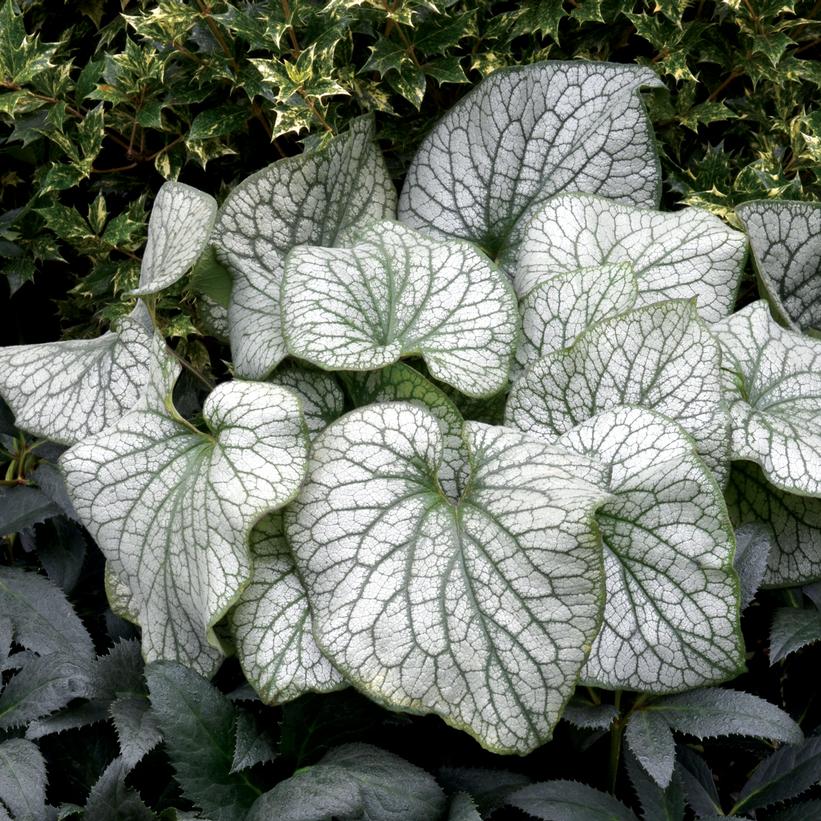
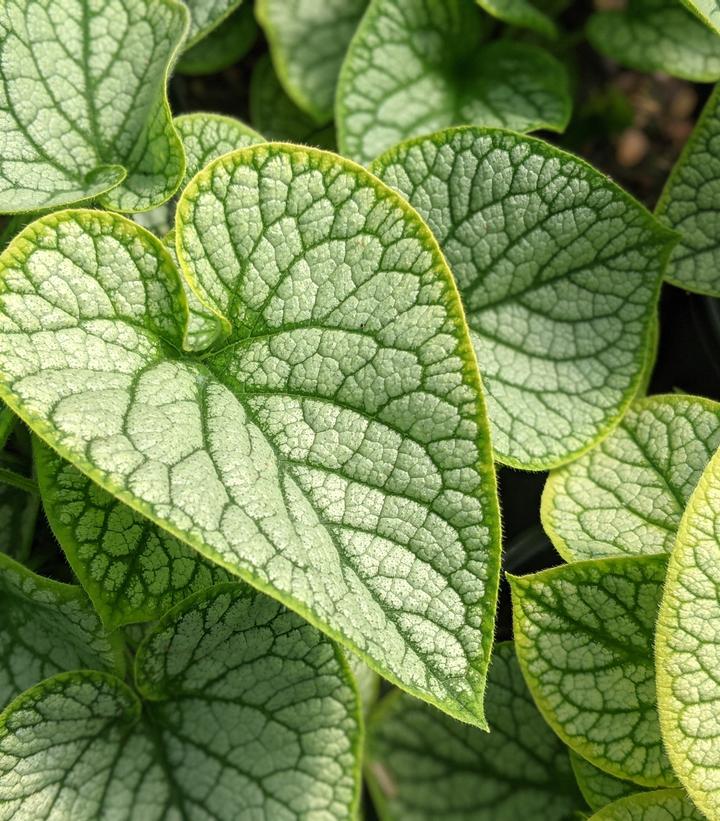
Brunnera mac. ‘Alexander’s Great’
Brunnera macrophylla ‘Jack Frost’
Lamium (Spotted Deadnettle)
Like I mentioned above, Brunnera are often listed as groundcovers but just don’t have the spreading habit needed to be a true ground cover in my garden.
One of the best choices for a tough yet showy perennial groundcover is Lamium. It makes this week’s list because it has abundant early spring flowers. Mine will flower from early April through June. Lamium forms a spreading patch of small silver leaves with a narrow green edge. Pink, purple or white flowers rise above the silver foliage. This is one of my favorite perennials to prune back as soon as the spring flowers have faded. Once pruned the new growth will often produce more flowers that I’ve had last all the way into the cooler fall weather!
I’ve used this perennial for easy color in containers, as a contrast plant in my perennial borders, and as a showy groundcover for my shady gardens. Alec has often commented that I have one of every variety available and he is probably right. They are super colorful and easy to grow so why not plant them all? Just be careful with over watering as it can cause root rot.
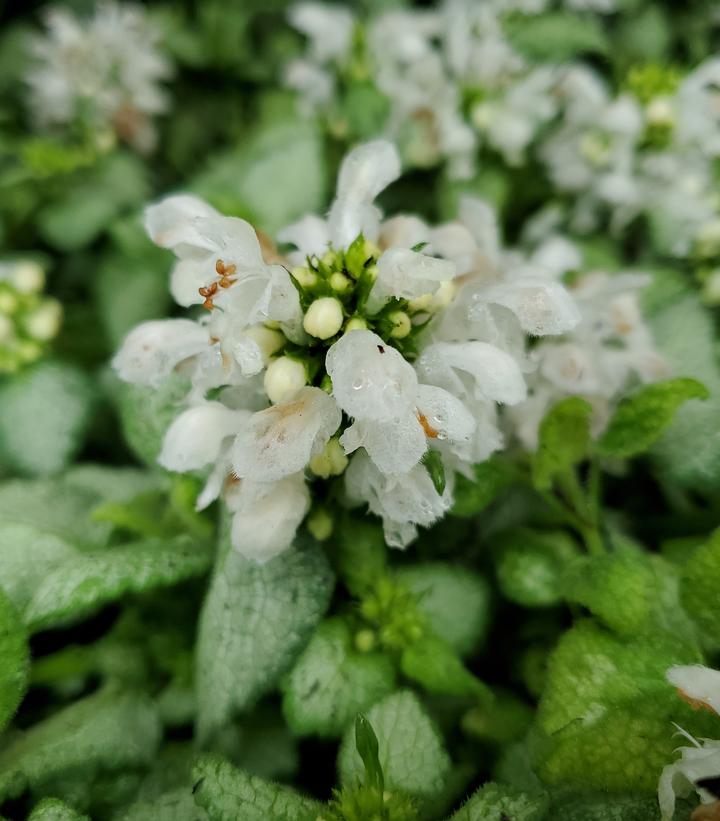
Lamium maculatum ‘White Nancy’
Lamium maculatum ‘Orchid Frost’
Lamium maculatum ‘Pink Chablis’
Forsythia (specifically all the new ones!)
Forsythia used to be just all about the flowers. Indeed, what’s not to love with early bright yellow blossoms? In all honestly, Forsythia have always been at the very bottom of my plant pallet. I’d recommend them for naturalizing hedges and areas along roadways because they grow fast and full and are very tolerant of snow, wind and salt. But the last few years have seen a revolution in Forsythia that has moved them way, way up on my list. The new varieties are compact, full of flowers and have great fall foliage color.
These new varieties are resurrecting Forsythia’s reputation and revolutionizing how we use them. The new compact selections offer an amazing flower display over older varieties. It is covered from base to tips with large bright yellow blooms in early spring. The attractive dark green foliage, unlike other Forsythia’s, provides season long interest. I think these new varieties are excellent as a short hedge, in mixed borders and foundations, or as a cut flower. Another fun plant fact; Forsythia are part of the olive family and although I think they will make an incredible addition to your garden, they will not be the best choice for your martini and they won’t taste good in a tapenade either.
For the best blooms, plant Forsythia x intermedia varieties in full sun to part shade. The shrubs need a minimum of four hours of direct, unfiltered sunlight each day to flower. Don’t hesitate to prune your Forsythia, they will look so much better if you are aggressive and prune them back every year. I hack mine back by a third every spring right after flowering. The shrubs will quickly bounce back and push out new growth the following year.
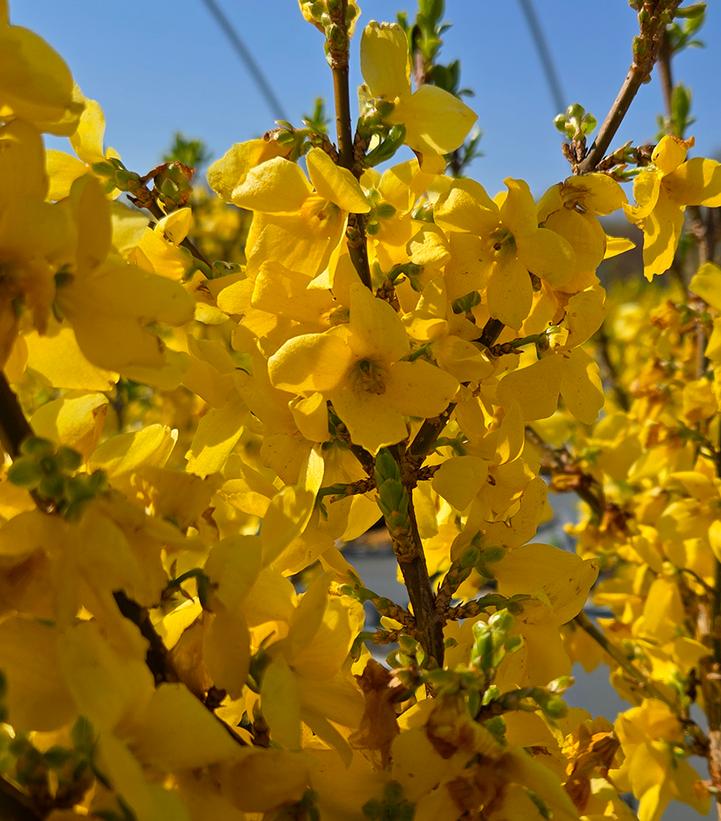
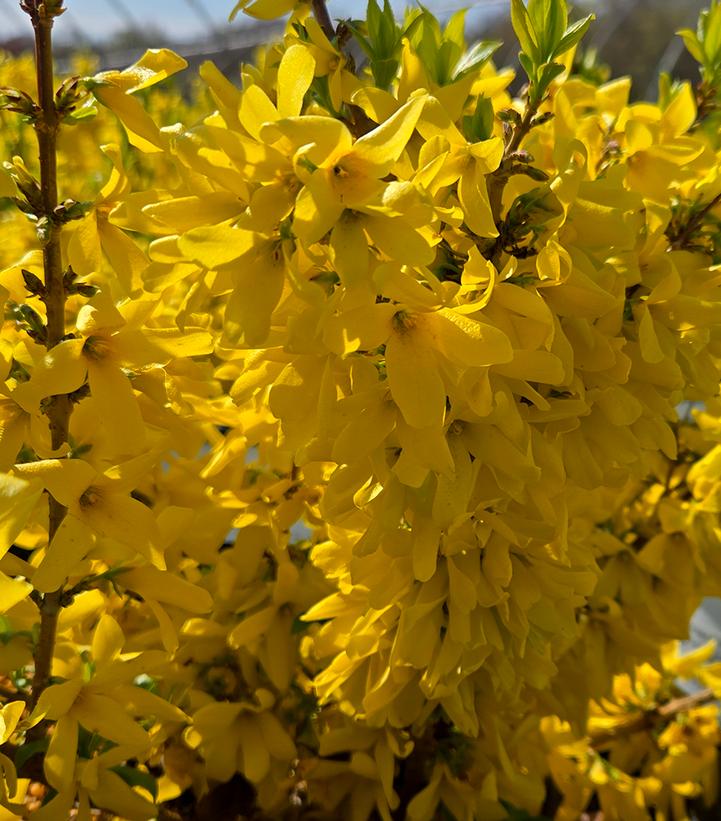
FORSYTHIA `SHOW OFF`
FORSYTHIA X’SHOW OFF STARLET’
Flowering Quince Chaenomeles Speciosa
My grandmother used to make jam with the quince that grew in her yard. I have never grown quince because my memories of her quince weren’t all that generous. It was a big, sprawling plant with sparse foliage and it’s only redeeming value in my memory was the jam. Well, the world of quince has turned upside down and I now have two colors of the Double Take series in my own gardens.
Double Take Quince have huge, vibrant, orange, pink, red or peach flowers on display in early spring. This quince should best be pruned after flowering to maintain its mounding 4′ tall and 4′ wide shape. I love that this compact shrub is deer resistant, heat and drought tolerant and does not produce thorns or berries. For the best blooms, plant in full sun.
Fun fact about these hybrid quince; Quince has edible parts (read: flowers)–even these non-fruiting types. They are a part of the rose and apple family of plants, both of which are also known for their tasty edibility.
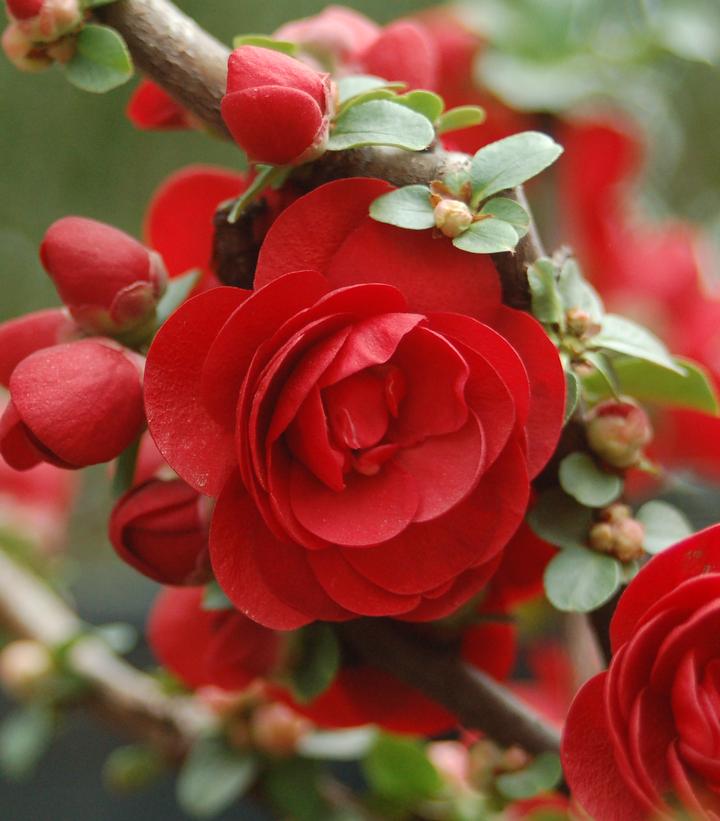
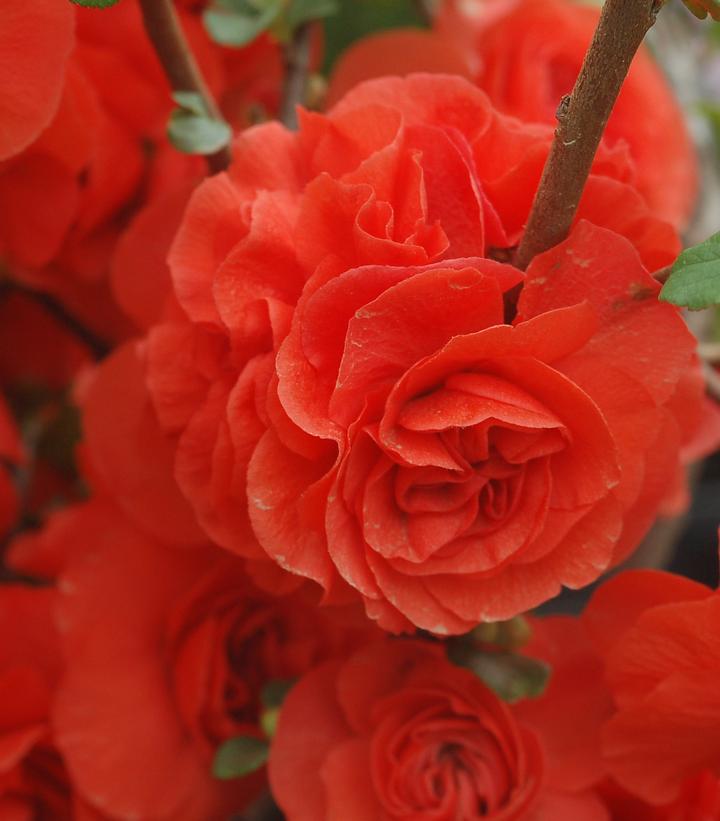 CH
CH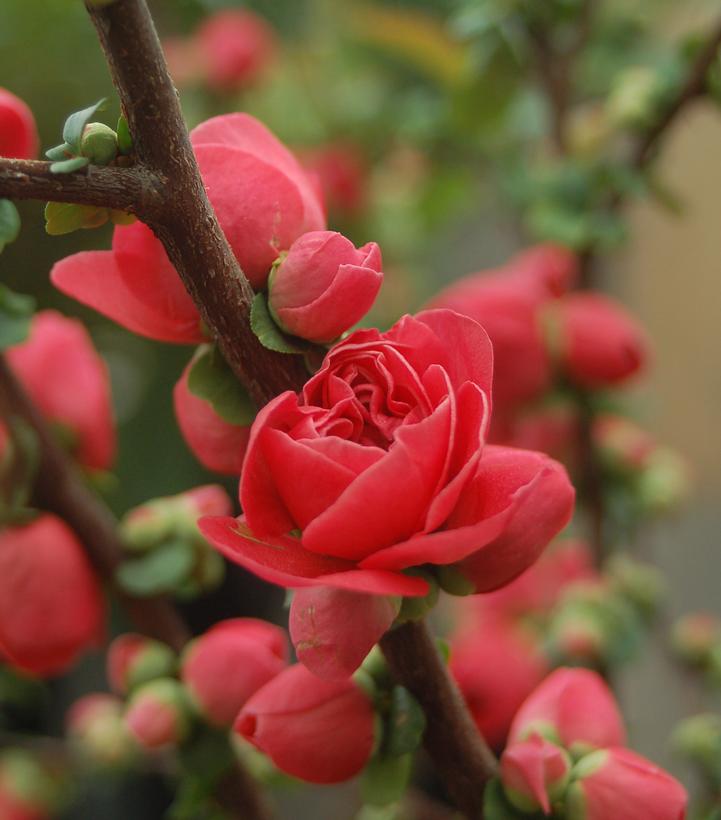 AENOMELES `DBL TAKE SCARLET STORM’
AENOMELES `DBL TAKE SCARLET STORM’
CHAENOMELES `DBL TAKE ORANGE’
CHAENOMELES `DBL TAKE PINK’
There are so many unique and beautiful early spring plants but these are a few of my favorites. I do tend to get really excited about new hybrids like the Sunkist Hellebores and Show Off Forsythias because the new breeding makes for longer, bigger and better blooms on easier to grow plants. More bloom for your buck, what’s not to love? Weather permitting we will be opening the store on March 20th and we can’t wait to welcome you all back!
All our best,
Michelle and all the Plant Geeks at Lakeview


